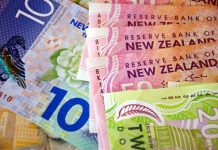Markets
German Bunds outperformed US Treasuries during European trading hours following an unexpectedly strong decrease of inflation expectations in the ECB’s April Consumer Expectations Survey. The divergence between the two became even larger as US Treasuries started underperforming (especially at the front end the curve) during the US session. The move started after the US Treasury announced plans to boost the size of its coming bills sales: $60bn for the 4-week tenor (+$25bn), $50bn for the 8-week tenor (+$35bn) and $46bn for the 17-week auction (+$2bn). Since the debt ceiling has been raised, the US Treasury is rapidly trying to replenish its depleted general account with the Fed which shrank to its lowest level since 2017. In coming weeks/months, sizes at the longer tenors will be upped as well with the bigger question being whether this will drain more liquidity in times of Fed rate hikes and QT or whether it will just trigger a shift in investor allocation from one cash instrument to the other. Daily changes on the US curve ranged between +1.3 bps (2-yr) and -4.2 bps (30-yr). Minutes before the market close, US Treasuries managed to erase a large part of the intraday losses in a strange, inexplicable, short squeeze. German yields closed the session up to 4 bps lower at the front end and broadly stable at the very long end. Loss of interest rate support at the front end pulled EUR/USD back below 1.07 to close at 1.0693.
Asian risk sentiment is mixed this morning as weak Chinese trade data (May exports -7.5% Y/Y) add to growth worries. The calendar is again razor thin. The OECD updates its economic outlook. Yesterday’s, the World Bank did the same. It projects global growth to decelerate from 3.1% in 2022 to 2.1% in 2023. Risks of financial stress in emerging markets and developing economies is intensifying amid elevated global interest rates. The Bank of Canada’s policy rate decision is today’s biggest wildcard. Money markets are split 50/50 over whether the BoC will lift its policy rate again by 25 bps after pausing in March and April. It would be an omen for global central banks after the RBA earlier this week conducted a second 25 bps rate hike after a one-meeting pause in April.
News and views
Global supply chain pressures eased further in May according to the NY Fed’s Global Supply Chain Pressure index (GSCPI) which eased from to -1.71 from -1.35 in April. The reading was the lowest since the start of the series in 1997. There were significant downward contributions from Great Britain backlogs and Taiwan delivery times. Euro Area delivery times and backlogs exhibited the largest sources of upward pressure in May. Looking at the underlying data, readings for all regions tracked by the GSCPI are below their historical averages. The GSCPI integrates a number of commonly used metrics with the aim of providing a comprehensive summary of potential supply chain disruptions. Global transportation costs are measured by employing data from the Baltic Dry Index and the Harpex index, as well as airfreight cost indices from the US BLS. The GSCPI also uses several supply chain-related components from PMI surveys, focusing on manufacturing firms across seven interconnected economies
Australian GDP rose 0.2% Q/Q and 2.3% Y/Y in the first quarter of 2023. It was the sixth straight rise in quarterly GDP, but the slowest since the Covid-19 lockdowns in September 2021. Private and public global fixed capital formation (respectively +1.4% after -0.9% in Q4 and +3% from -1.2%) were the main drivers of GDP growth. Household consumption continued to slow in Q1 rising 0.2% Q/Q and resulting in a 0.1 ppt contribution to growth. Net trade detracted 0.2 ppt from growth as exports increased 1.8% and imports rose 3.2.%. Despite the deceleration in growth, prices continued to grow strongly in Q1. The GDP implicit price deflator rose 1.9% Q/Q and 6.8% Y/Y. Compensation of employees also continued to rise (2.4%) as did employment, hours worked, pay raises and bonuses in the public sector. The household saving to income ratio fell to 3.7%, its lowest level since 2008, driven by higher income tax payable, interest payable on dwellings, and increased spending due to the rising cost of living pressures.














